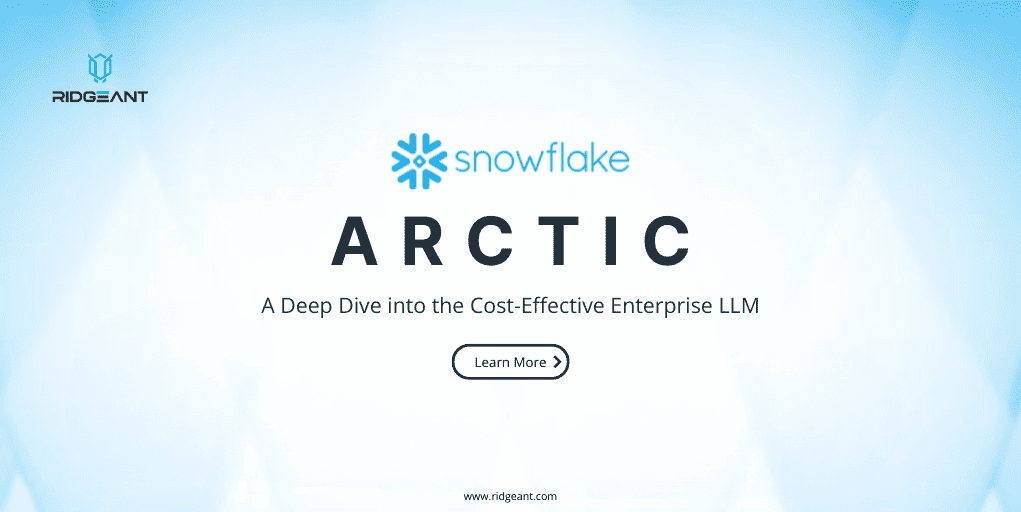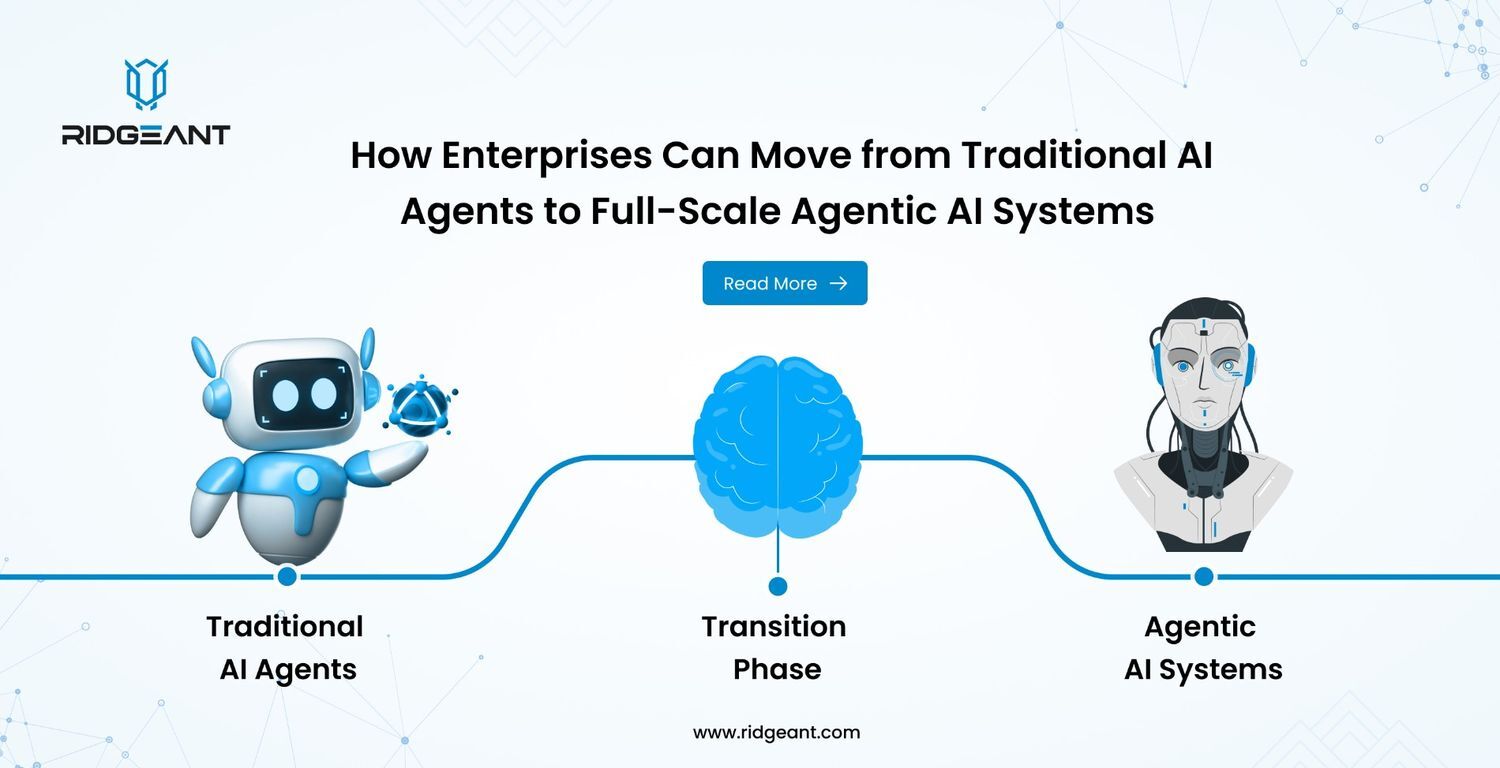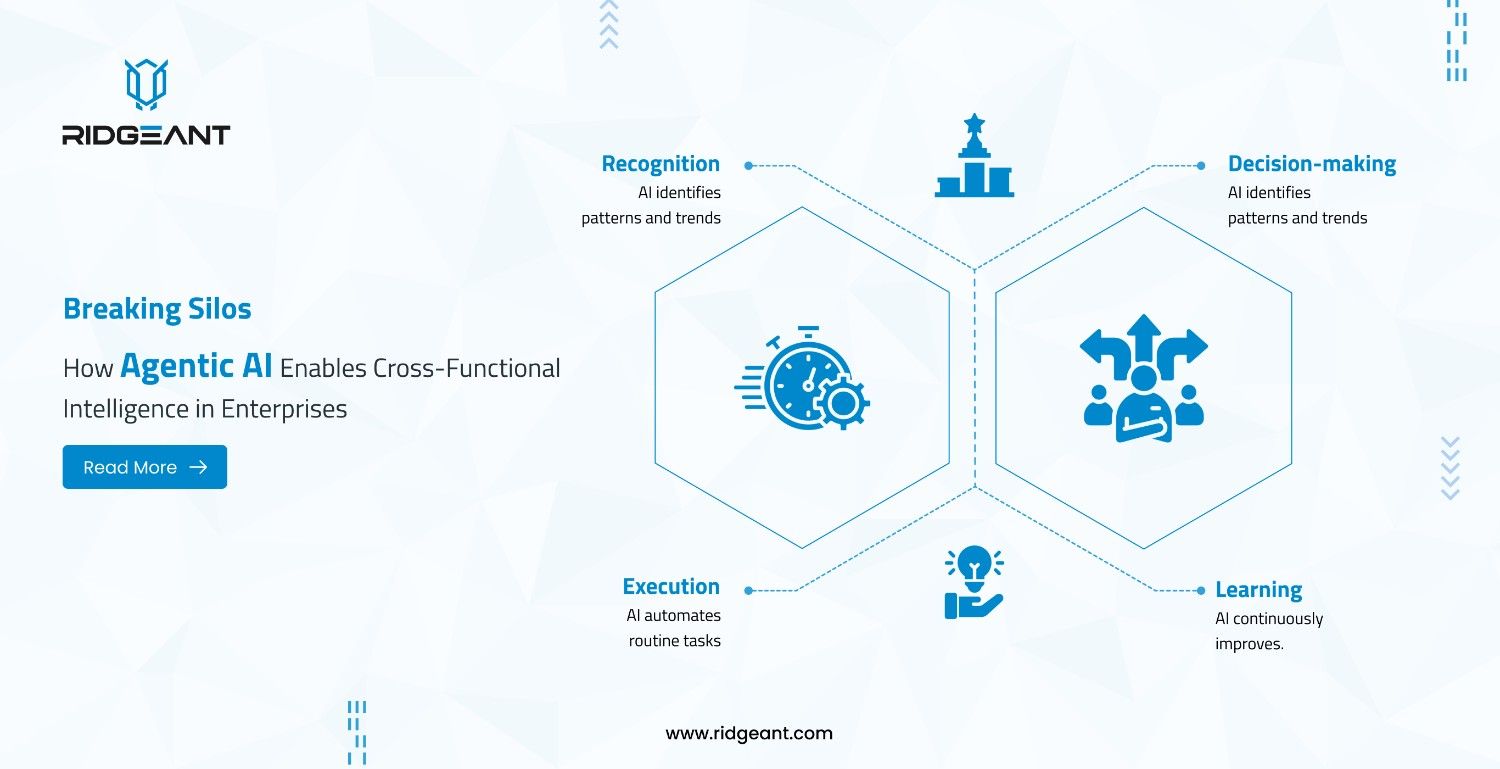
Snowflake Arctic: A Deep Dive into the Cost-Effective Enterprise LLM
- Machine Learning, Snowflake, Data Science, ML and AI, Artificial Intelligence
- May 16, 2024
- Ridgeant

Large language models (LLMs) have taken the world by storm, demonstrating proficiency in tasks ranging from text generation to code completion. However, their immense potential has often been overshadowed by a significant hurdle: prohibitively expensive training costs. This barrier has limited the accessibility of LLMs for many businesses, particularly those seeking to leverage them for enterprise-specific applications.
Snowflake AI Research is at the forefront of addressing this challenge. Their recent introduction of Snowflake Arctic, an open-source LLM, marks a significant leap forward in cost-effective enterprise AI.
Let’s deep dive in to the technical details of Arctic, explore its architecture, training efficiency, and the unique approach that positions it as a game-changer for businesses.
Understanding Enterprise AI Needs
Before diving into the specifics of Arctic, let’s establish the context of enterprise AI needs. Businesses require LLMs with skillsets tailored to address practical challenges.
Here are some key focus areas:
- SQL Co-pilots: Streamlining database interactions by generating efficient SQL queries based on natural language instructions. This can significantly boost developer productivity and reduce query errors.
- Code Assistants: Providing intelligent code completion and context-aware suggestions to enhance developer efficiency and code quality.
- Conversational Chatbots: Building chatbots equipped with natural language understanding and generation capabilities to improve customer service interactions and automate routine tasks.
These tasks require LLMs that excel in specific areas like code generation, SQL proficiency, and the ability to follow complex instructions. Traditional LLMs, however, often prioritize metrics that are not directly relevant to enterprise workflows. Additionally, their hefty training costs create a significant barrier to entry for many businesses.
Understanding the Architecture of Snowflake Arctic
Snowflake Arctic tackles these challenges through a unique combination of architectural elements and training strategies.
Here’s a breakdown of its core components:
- Dense-MoE Hybrid Transformer Architecture: Arctic leverages a novel architecture that blends a dense transformer model with a residualized Mixture-of-Experts (MoE) MLP component. This hybrid approach offers several advantages:
- Efficiency: The dense transformer handles tasks requiring high context awareness. The MoE component, composed of a large number of smaller experts, tackles more specialized tasks and reduces the overall computational cost.
- Scalability: The MoE architecture allows for a high number of experts, enabling Arctic to handle complex tasks effectively.
- Flexibility: The dense transformer provides a solid foundation for various tasks, while the MoE component can be adapted to specific enterprise needs through fine-tuning.
- Many-but-Condensed Experts: Traditional MoE models often employ a relatively small number of experts. Arctic, however, utilizes a larger pool (128) of fine-grained experts. This strategy allows for greater specialization and improved performance on enterprise tasks. Furthermore, Arctic employs “top-2 gating,” a technique that dynamically selects the most relevant subset (around 17B) of experts for a given task. This approach minimizes computational overhead while maintaining performance.
- Dynamic Data Curriculum: Training a successful LLM requires feeding it a carefully curated dataset. Arctic’s training process leverages a three-stage curriculum with a focus on enterprise-relevant skills:
- Stage 1 (1 Trillion Tokens): Focuses on foundational skills like common-sense reasoning.
- Stage 2 (1.5 Trillion Tokens): Introduces more complex elements like code and math concepts.
- Stage 3 (1 Trillion Tokens): Emphasizes enterprise-specific skills like SQL generation and instruction following.
This staged approach ensures that Arctic is equipped with a strong base in general language understanding while subsequently developing expertise in areas critical for enterprise applications.
Good Read: An Exhaustive Guide to Snowflake Integration
Exploring the Secrets of Training Efficiency
Cost-effective training is a cornerstone of Snowflake Arctic. Here’s how the model achieves this:
- Reduced Communication Overhead: Standard MoE architectures suffer from high communication overhead between experts during training. Arctic’s architecture mitigates this by strategically combining the dense transformer with the MoE component. This allows for overlapping communication and computation, significantly improving training efficiency.
- Focus on Active Parameters: During inference (using the model to make predictions), the number of active parameters directly impacts processing speed and resource consumption. Arctic’s training process employs “top-2 gating,” resulting in a relatively small number of active parameters (around 17B) compared to other MoE models. This translates to faster inference and lower computational costs.
These elements, combined with the “Many-but-Condensed Experts” approach, enable Arctic to achieve top-tier performance on enterprise tasks while maintaining a significantly lower training cost than other open-source LLMs.
Evaluation Metrics: Enterprise Focus
Traditionally, LLM evaluation metrics have emphasized world knowledge and general reasoning capabilities. While these are important, they don’t necessarily translate directly to enterprise needs. Snowflake recognizes this and introduces the concept of “enterprise intelligence” metrics, a collection of skills crucial for businesses. These metrics include:
- Coding (HumanEval+ and MBPP+): Measures the LLM’s ability to generate human-quality code based on natural language instructions.
- SQL Generation (Spider): Evaluates the model’s proficiency in generating efficient SQL queries from natural language descriptions.
- Instruction Following (IFEval): Assesses the LLM’s capacity to follow complex instructions and complete tasks accurately.
Arctic demonstrates superior performance on these enterprise intelligence metrics compared to other open-source LLMs, even those trained with significantly higher compute budgets. This highlights its effectiveness in tackling real-world enterprise challenges.
Beyond Efficiency: The Power of Openness
Snowflake’s commitment to nurturing innovation extends beyond just the technical aspects of Arctic. They are actively promoting open collaboration and knowledge sharing through the following initiatives:
- Open Access and Weights: Snowflake Arctic’s code and pre-trained weights are freely available under the permissive Apache 2.0 license. This allows businesses and researchers to experiment, build custom applications, and contribute to the model’s development.
- “Cookbook” for LLM Development: In addition to open-sourcing the model, Snowflake is providing a comprehensive “cookbook” that details the research, design choices, and insights gained during the development of Arctic. This valuable resource empowers others to build efficient and cost-effective LLMs, accelerating advancements in the field.
- Continuous Learning and Improvement: Snowflake is actively working on further enhancing Arctic’s capabilities. This includes:
- Attention Switcher for Unlimited Sequence Generation: Currently, Arctic has a 4K attention context window. The team is developing an attention-sinks based sliding window implementation to enable unlimited sequence generation in the near future.
- Expanding Attention Window: In collaboration with the community, Snowflake aims to extend the attention window to 32K, enabling the model to handle even more complex tasks.
Getting Started with Snowflake Arctic
Here’s a roadmap to explore and leverage the power of Snowflake Arctic for your enterprise:
- Access the Model: Download Arctic directly from Hugging Face or utilize Snowflake’s Github repository for inference and fine-tuning recipes.
- Explore Free Trial on Snowflake Cortex: Snowflake Cortex offers a free trial period for serverless access to Arctic. This allows businesses to experiment with the model without upfront infrastructure investment.
- Utilize Model Gardens: Leading cloud providers like AWS, Azure, and others are integrating Arctic into their respective model gardens. This provides businesses with familiar and convenient access to the model.
- Experience Live Demos: Explore live demos hosted on Streamlit Community Cloud and Hugging Face Streamlit Spaces. These interactive demos offer a firsthand experience of Arctic’s capabilities.
- Join the Community Hackathon: For those interested in building Arctic-powered applications, the Arctic-themed Community Hackathon provides a platform to learn, collaborate, and win recognition.
- Delve Deeper with the Cookbook: Snowflake’s “cookbook” offers invaluable insights into building cost-effective MoE models. Utilize this resource to gain a deeper understanding of Arctic’s development process and explore customization possibilities.
Conclusion: A New Era for Enterprise AI
Snowflake Arctic marks a significant turning point in the realm of enterprise AI. By prioritizing cost-effective training, a focus on enterprise-relevant skills, and a commitment to open collaboration, Arctic empowers businesses to unlock the potential of LLMs. With this cutting-edge model, there are new opportunities to improve decision-making, expedite workflows, and gain a competitive edge in the dynamic business world.
Looking to leverage the Snowflake Arctic for your organization?
Contact us today to explore how our Snowflake services and solutions can help you implement this groundbreaking LLM and achieve the potential of cost-effective enterprise AI.














